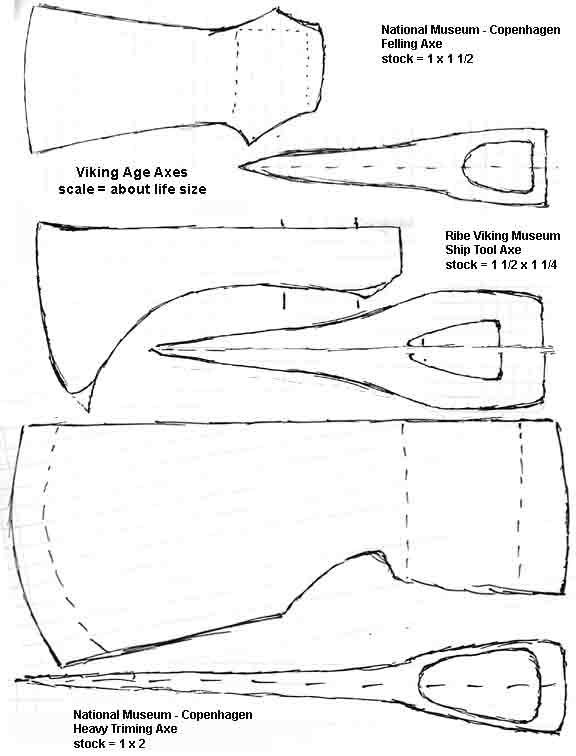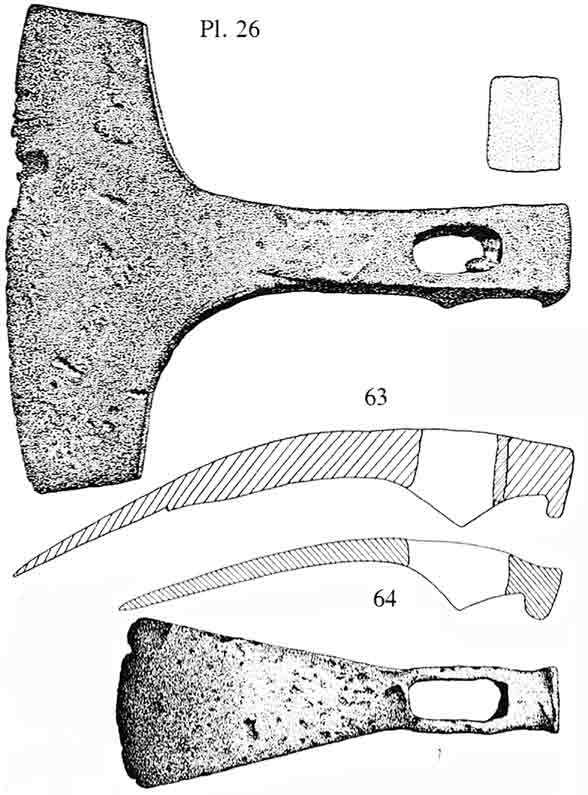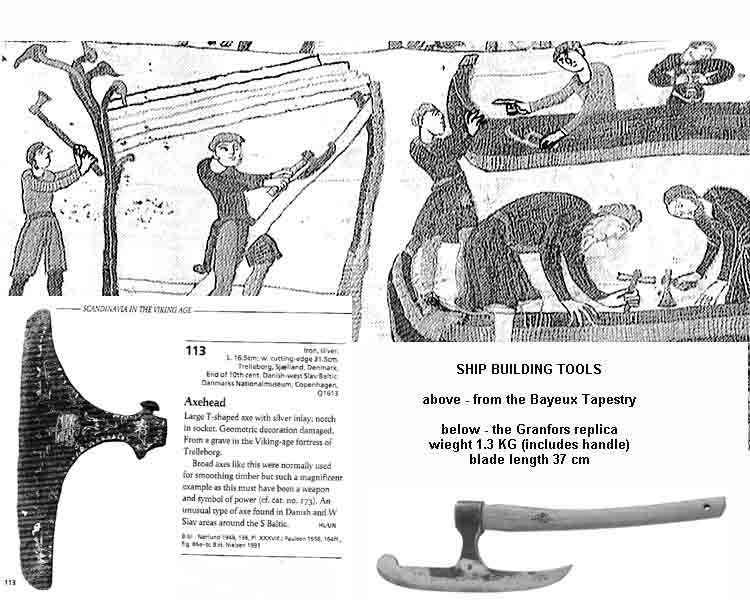My number of postings has dropped off (sorry) over the last couple of weeks. I have one major physical project underway, plus one 'paper' project I'm working on. The paperwork is related to the upcoming exhibit of contemporary artists - GRAVE GOODS. If you have not taken a look at this gallery style presentation starting on September 5, 2008 at the Woodstock Museum - go on HERE.
The physical project is to research and produce a complete working set of Viking Age ship building tools for the 'Norse Encampment' living history program at L'Anse aux Meadows NHSC.
Originally I had been contacted by my friends at the site in late winter. It took a bit of wrangling to come up with a working list of tools. I then asked them to put off the finial selection until after my trip to Denmark. I had fully intended to visit the Viking Ship Museum in Roskilde, and knew I would gain valuable insights. I also would have a chance to actually view a large number of artifact tools at the various other museums I was planning to visit.
I have commented earlier on what tools were suggested by the folks at the VSM. As I have been working up the tools, primarily the axes, I have been keeping a photo record. At this point I have finished six of the total of seven, with only the large broad axe from the Bayeaux Tapestry remaining. All are forged from mild steel with lap welded spring steel cutting edges. One important feature to the construction is that Viking Age axes have punched, not folded, eyes.
Bellow are some of my production drawings. I have used mainly illustrations from various primary artifact reports, or my own field drawings from artifact. Through the magic of Photoshop, I then scaled the drawings to correct life size to help me get the shapes and proportions correct as I forged the pieces. Printed copies of the drawings are used in the workshop to guide the work.

This first shows a set of my own field drawings from Denmark - timber cutting and shaping axes.

The second are modified from a primary report - the Mastermyr tool find in this case. Only the top adze is being replicated (finished yesterday).

The third shows using primary materials, but researched from books. The artifact axe is held in the National Museum in Copenhagen, but unfortunately this gallery was closed for renovations when I visited.
I expect the Bayeaux axe to be the most difficult to make. The eye and body will be forged from one block, with the cutting blade and its welded steel edge from another. I made up the smaller Mastermyr adze first to get some idea of the process. Given the large size of the broad axe, I expect the welding to be difficult.




















1 comment:
I can sympathise with closed museums....the medieval armour section of the war museum in Brussels was closed when I visited. How distressing!
Post a Comment